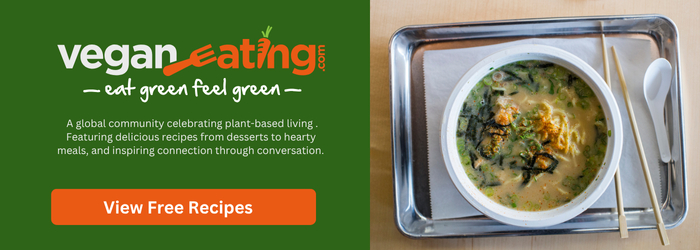As we venture into 2025, the culinary landscape continues to evolve, reflecting a growing awareness of health, sustainability, and creativity in our food choices. Veganism has emerged as a vibrant lifestyle embraced by many, transcending dietary restrictions to become a full-fledged movement that celebrates plant-based eating. Whether you’re hosting a casual gathering with friends or an elaborate Sunday brunch, crafting a vegan brunch spread in 2025 offers an exciting opportunity to explore innovative flavors, textures, and visuals—all while supporting ethical and eco-friendly practices.
In the modern era, a vegan brunch spread can be as diverse and satisfying as its traditional counterparts. It invites an array of options, from hearty savory dishes like chickpea omelets and stuffed avocado toast to delectable sweet treats such as chia pudding and banana pancakes. With advances in culinary technology and a plethora of seasonal ingredients readily available, creating a plant-based feast has never been more accessible or enticing. Moreover, with the rise of alternative proteins, egg substitutes, and plant-based dairy options, even non-vegans are likely to be delightfully surprised by the richness and complexity that a well-planned vegan brunch can offer.
As we explore the myriad possibilities for crafting the perfect vegan brunch spread, we’ll delve into essential tips for curating a menu that celebrates the bounty of nature. From thoughtful ingredient selection to presentation techniques that elevate the dining experience, this guide will empower you to assemble a brunch that embodies not only the ethos of veganism but also the spirit of communal enjoyment. Get ready to impress your guests and tantalize their taste buds with a vibrant, delicious, and eco-conscious vegan brunch that reflects the exciting culinary trends of 2025!
Plant-Based Protein Options
In 2025, creating a vegan brunch spread that emphasizes plant-based protein options can elevate your meal while ensuring it remains nutritious and hearty. Plant-based proteins are diverse and can be incorporated into numerous dishes to cater to different taste preferences. Some popular sources of plant-based protein include legumes, lentils, edamame, tempeh, tofu, seitan, and various nuts and seeds. For a brunch spread, consider featuring dishes like a chickpea salad or a lentil-based patty as a protein-rich main component. These can be served as a sandwich filling or on their own with a variety of dips and sauces. Another option is a tofu scramble seasoned with spices and vegetables, offering the same satisfying texture as scrambled eggs but with the additional benefits of being cholesterol-free and packed with plant nutrients. Cooking with tempeh or seitan can provide meat-like textures for those who prefer a heartier meal, allowing for innovative interpretations of classic brunch favorites such as breakfast burritos or vegan benedict. In addition to these protein options, incorporating a full spectrum of grains, such as quinoa or farro, can complement your vegan brunch offerings and provide further depth of flavor and texture. Including nuts and seeds, either as a topping or an ingredient in dishes like granola or smoothies, ensures added protein content and healthy fats. As plant-based diets continue to rise in popularity and accessibility, experimenting with new protein sources and preparation methods can help you create a varied and exciting brunch spread. To enhance the brunch experience, consider combining these protein options with fresh seasonal vegetables and creative beverages. The beauty of a vegan brunch lies in its versatility, allowing for the incorporation of vibrant colors and textures while staying health-conscious. Embracing plant-based proteins not only makes your brunch spread delicious but also aligns with the growing emphasis on sustainable eating practices in 2025. Engaging with these elements will not only satisfy your guests but also introduce them to the creative possibilities of plant-based dining.
Seasonal Vegetable Dishes
Creating a vegan brunch spread in 2025 using seasonal vegetable dishes can be both rewarding and delicious. Seasonal vegetables not only provide superior flavor and nutritional benefits, but they also support local farmers and reduce the environmental impact of transportation. In the context of a brunch spread, these dishes can be made vibrant and appealing, showcasing the freshest produce available that time of year. To craft a memorable spread, begin by exploring the seasonal produce that is at its prime during the chosen month. For instance, in spring, you might want to incorporate asparagus, peas, and radishes, while summer could bring an abundance of tomatoes, zucchini, and peppers. Autumn can inspire beautiful dishes with squash, kale, and root vegetables, whereas winter can include hearty options like Brussels sprouts, celeriac, and sweet potatoes. By focusing on these ingredients, you can create a medley of roasted, grilled, or sautéed dishes that highlight their natural beauty and flavors. Consider preparing a colorful roasted vegetable platter seasoned with fresh herbs and citrus zest to add brightness. A simple ratatouille, made with a mix of summer squash, eggplant, and basil, can be served warm or at room temperature, making it an excellent choice for brunch gatherings. If you want a lighter option, a quinoa salad with shredded seasonal vegetables, chickpeas, and a zesty dressing can feel refreshing and filling at the same time. Additionally, showcasing vegetable dishes can allow for creativity in presentation. Consider using vibrant serving platters and garnishing with edible flowers or microgreens to elevate the aesthetic of your brunch. Remember to think about textures and colors when composing your spread, mixing crispy, crunchy, and creamy elements to entice all the senses. Pair these seasonal vegetable dishes with homemade dips, such as a roasted red pepper hummus or herbed tahini sauce, to offer guests a variety of flavors and experiences. As you plan your vegan brunch spread in 2025, embracing seasonal vegetables can lead to delicious, impactful, and memorable meals that reflect the bounty of the Earth and the innovative spirit of plant-based cooking.
Vegan Breakfast Baked Goods
Vegan breakfast baked goods can be a delightful centerpiece for a brunch spread, combining both comfort and creativity. In 2025, the availability of quality vegan ingredients has expanded significantly, making it easier than ever to bake delicious and satisfying goods. Classic favorites like muffins, scones, and banana bread can be transformed into vegan versions by substituting traditional dairy and eggs with plant-based alternatives. For instance, ripe bananas or applesauce can replace eggs, while almond or oat milk can be used in place of cow’s milk. Additionally, experimenting with vegan buttermilk—a blend of plant milk and vinegar—can achieve the desired rise and texture in baked goods. The key to elevating your vegan brunch spread is to add unique flavors and textures to your baked goods. In 2025, a plethora of innovative ingredients are at your disposal, such as aquafaba (the liquid from canned chickpeas) for a fluffier batter or silken tofu for moistness. Incorporating seasonal fruits, nuts, and spices can enhance both the taste and presentation of your baked items. Vegan chocolate chips, coconut flakes, or even citrus zest can be wonderful add-ins for muffins and cakes. Consider serving a variety of baked goods, such as a light lemon blueberry loaf, chocolate-chip and walnut cookies, or pumpkin spice muffins, catering to different palates and preferences. Moreover, embracing inclusivity in your brunch spread can also mean providing gluten-free options for those with dietary restrictions. Utilizing gluten-free flours, such as almond, coconut, or a pre-mixed gluten-free flour blend, can allow everyone to enjoy the spread equally. Topping your baked goods with a vegan glaze or a sprinkle of powdered sugar can add an elegant finishing touch and make them visually appealing. When assembling your vegan brunch in 2025, an array of colorfully presented baked goods can serve not only as a feast for the taste buds but also for the eyes. Consider displaying items on tiered stands or decorative platters for an inviting buffet style that encourages guests to taste a little bit of everything. By thoughtfully preparing a range of vegan breakfast baked goods, you can create a memorable brunch experience that highlights the wonders of plant-based cooking while ensuring that everyone feels included and satisfied.
Creative Brunch Beverages
When planning a vegan brunch spread, creative brunch beverages can elevate the dining experience, adding an element of fun and sophistication. In 2025, the trend of innovative and sustainable drinks continues to grow, offering endless possibilities for refreshing beverages that cater to various tastes. To craft a memorable beverage selection, consider incorporating artisanal mocktails, cold brews, and infused teas, all of which can highlight seasonal flavors and local ingredients. Start with a base of refreshing juices made from fresh, organic fruits, such as watermelon, grapefruit, or a fusion of citrus. These can be mixed with herbs like mint or basil for added complexity and refreshing notes. For a touch of creativity, think about incorporating unique elements, such as homemade syrups flavored with lavender or hibiscus. Additionally, herbal, fruit-forward iced teas can serve as a delightful option, allowing guests to enjoy the subtle flavors and aromas that come from freshly steeped herbs. Another trend gaining traction is the development of non-alcoholic beverages that mimic classic cocktails. Aromatic shrubs, which are vinegar-based concentrates, can be combined with sparkling water to create sophisticated mixers that appeal to all palates. Crafting a few signature drinks, such as a “Mimosa with a Twist” using blood orange juice and sparkling water or a “Berry Basil Fizz,” can leave a lasting impression on your brunch guests. In addition to juices and mocktails, consider serving cold-brew coffee or innovative coffee alternatives, like mushroom coffee or matcha lattes. These beverages not only cater to the health-conscious brunch-goer but also allow for unique flavor combinations that can complement your savory and sweet dishes alike. By prioritizing freshness and seasonality, you can create a brunch beverage spread that not only quenches thirst but also sparks conversation and enhances the overall experience.
Eco-Friendly and Sustainable Practices
As we look towards the future, particularly in 2025, embedding eco-friendly and sustainable practices into our vegan brunch spread becomes not only a choice but a necessity. The increasing awareness of climate change and environmental degradation highlights the importance of sourcing ingredients and designing meals with sustainability in mind. When planning your vegan brunch, consider these practices to ensure your event reflects a commitment to preserving our planet. One effective approach is to prioritize locally sourced ingredients. By choosing fruits, vegetables, and grains that are grown in your region, you can significantly reduce the carbon footprint associated with transportation. Farmers’ markets and local co-ops are great places to find fresh produce and artisanal products that not only taste better but also support local economies. Additionally, opting for seasonal ingredients ensures that you are using food that is at its peak flavor and nutritional value, promoting a sustainable cycle of consumption. Another key aspect of an eco-friendly brunch is minimizing waste. This can be achieved by planning your menu carefully to avoid food surplus and by reusing leftovers in creative ways beyond the brunch event. Implementing composting for any food scraps will also help in diverting waste from landfills. Moreover, consider using biodegradable or reusable serving ware. This small step can drastically reduce the environmental impact of single-use plastics commonly associated with dining events. In 2025, as the conversation around sustainable dining evolves, there may also be innovative products and services dedicated to enhancing eco-friendliness in food preparation and serving. Incorporating plant-based alternatives that minimize the use of processed ingredients further aligns with eco-conscious practices. For instance, using whole foods and natural seasonings instead of processed sauces or flavorings could lead to healthier and more sustainable meal options. By focusing on these eco-friendly and sustainable practices, you create not just a delicious vegan brunch spread, but also a thoughtful engagement with the environment and community.
Vegor “The scientist”
Oct-26-2025
Health



Health | No Comments » on How can I make a vegan brunch spread in 2025?